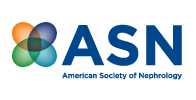Contacts: Kurtis Pivert • (202) 699-0238 • [email protected]Bob Henkel • (202) 557-8360 • [email protected]
Highlights• Rates of diabetic kidney disease could be higher than currently assumed according to a new study presented at ASN Kidney Week 2014 in Philadelphia.• In an autopsy study of 150 individuals with type both type 1 and type 2 diabetes, researchers found 49.3% of individuals had diabetic nephropathy.
Diabetes is the leading cause of kidney disease
Newswise — Philadelphia, PA (November 18, 2014) — Diabetic kidney disease may be more common than currently assumed according to new research presented at ASN Kidney Week 2014. A study of 150 deceased individuals with diabetes found nearly 50% had diabetic nephropathy at their time of death.
Researchers at the Leiden University Medical Center in The Netherlands performed an autopsy study to more accurately determine the rates of diabetic kidney disease. They collected kidney tissue samples from 150 deceased individuals with a confirmed diabetes diagnosis during their lives. Using light and/or electron microscopy they were able to identify individuals with kidney disease and then grade its severity.
“Our findings show a histologically proven diabetic nephropathy in much more patients than would have been estimated clinically,” said lead author Celine Klessens. The researchers also noted nonsignificant trends for association between the severity of diabetic kidney disease and death due to cardiovascular disease (p = 0.059) and duration of diabetes diagnosis (p = 0.07).
“Some of these patients had clinical evidence of diabetic nephropathy during their lives, others did not,” Klessens added. “Only 3 out of 150 patients underwent a renal biopsy during their lifetimes.”
Klessens noted that there is no cure yet for diabetic kidney disease. “Closely monitoring patients with diabetes, e.g. by searching for proteinuria, would be helpful in establishing the diagnosis of diabetic nephropathy as soon as possible. To develop therapeutic measurement in order to control or even reverse the renal lesions is the next challenge,” she noted.
“Diabetic Nephropathy Underdiagnosed: Results from an Autopsy Study” (Abstract SA-PO273)
Disclosure information is available athttp://www.asn-online.org/education/kidneyweek/2014/program-faculty.aspx.
ASN Kidney Week 2014, the largest nephrology meeting of its kind, will provide a forum for more than 13,000 professionals to discuss the latest findings in kidney health research and engage in educational sessions related to advances in the care of patients with kidney and related disorders. ASN Kidney Week 2014 will take place November 11–16, 2014, at the Pennsylvania Convention Center in Philadelphia, PA.
ASN does not offer medical advice. All content in ASN publications is for informational purposes only, and is not intended to cover all possible uses, directions, precautions, drug interactions, or adverse effects. This content should not be used during a medical emergency or for the diagnosis or treatment of any medical condition. Please consult your doctor or other qualified health care provider if you have any questions about a medical condition, or before taking any drug, changing your diet or commencing or discontinuing any course of treatment. Do not ignore or delay obtaining professional medical advice because of information accessed through ASN. Call 911 or your doctor for all medical emergencies.
Founded in 1966, and with nearly 15,000 members, the American Society of Nephrology (ASN) leads the fight against kidney disease by educating health professionals, sharing new knowledge, advancing research, and advocating the highest quality care for patients.
# # #
